A trip to Verona is a plunge into the emotions of bygone times, of a city that conserves values and forms related to an ancient past of medieval and renaissance splendour, albeit it is in constant expansion in our own day. According to the poet, Shakespeare, “There is no world outside these walls…” but this also expresses the impression that strikes tourists when they enter the ancient walls that surround the city.
The tragic story of the love of Romeo and Juliet, which Shakespeare situates in the Verona of the Scala seigniory, makes the city a preferred destination for lovers and tourists seeking emotions.
During the summer months a stroll through the ancient city can reach a climax of emotions in an evening at the Arena, Italy’s largest opera theatre. The Roman amphitheatre can seat 15,000 spectators and put on a show with scenery designed by the greatest artists in the world: an evening at the Arena is unforgettable and reason enough alone to make a trip to Verona.There are visual memories and suggestions for travellers stopping over in Verona, not only due to the ancient architecture and its testimonial value, which pervades the entire city; not only thanks to the suggestive atmosphere of the narrow streets and squares, but also because of the tastes and flavours of an inimitable traditional territorial cuisine that has been perpetuated unaltered through time, which creates insoluble ties with veronese wines, which are famous and highly appraised throughout the world.
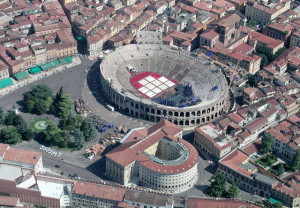 General Aspects
General Aspects
Verona is one of the most ancient and beautiful Italian cities. It has 250,000 inhabitants and is the largest venetian city after Venice. Near Garda Lake, the city spreads out from the shores of the Adige River, at the feet of the venetian pre-alpine hills, enjoying a fortunate climatic position.
Verona is at the centre of the most important national and international routes of communication, so it has always been an important centre of commerce, fuelled – among other things – by the important industrial and agricultural production of the province.
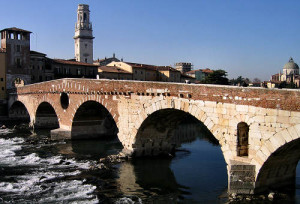 Historical Notes
Historical Notes
The origins of the city are uncertain, as is the meaning of the name of Verona itself. In the III century B.C., it was populated by the Venetians, but as early as 89 B.C, Verona became a Roman colony and was an important crossroads: the Claudia-Augusta road, the Postumia and the Gallic road all passed through the city. In the period of the barbaric invasions, Teodorico made Verona the headquarters of his reign and built a sumptuous castle on the hill of San Pietro. Berengario, who had been elected king of Italy, chose Verona as his residence. In medieval times Verona became a free municipality and reached its maximum splendour with the dynasty of the Scala family.
After a brief dominion under the Visconti and Carraresi, in 1405 the city spontaneously accepted the rule of the Serenissima Republic. Venice’s dominion thus lasted about four hundred years, until the French invasion of 1797. With the Treaty of Campoformio (October 1797), Napoleon consigned Verona and much of its territory to Austria.
Under Austrian dominion, Verona became one of the strongholds of the Quadrilateral. Finally, Verona was united to the Reign of Italy in 1866 by popular vote.
Main place:
Arena di Verona
Basilica di San Zeno Maggiore
Casa di Giulietta
Piazza Bra
Piazza delle Erbe
Ponte Scaligero


 General Aspects
General Aspects Historical Notes
Historical Notes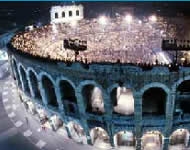 The Stage erected in the Summer in the Arena is the biggest in the world. It measures 47 metres by 28. Small garrets are positioned around the circumference of the Amphitheatre and those positioned behind the stage are used as changing rooms for the artists, who reach the stage by descending a steep wooden staircase.
The Stage erected in the Summer in the Arena is the biggest in the world. It measures 47 metres by 28. Small garrets are positioned around the circumference of the Amphitheatre and those positioned behind the stage are used as changing rooms for the artists, who reach the stage by descending a steep wooden staircase.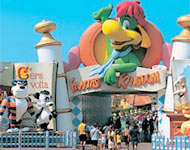

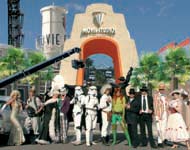

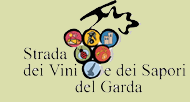 They deserve mention the cellars of the Zeni brothers, from which is home to the Wine Museum. A Bardolino take place some important events, among which the Chiaretto Festival (May), the Grape Festival and Bardolino (end of September) and the Novello Festival (November 6).
They deserve mention the cellars of the Zeni brothers, from which is home to the Wine Museum. A Bardolino take place some important events, among which the Chiaretto Festival (May), the Grape Festival and Bardolino (end of September) and the Novello Festival (November 6).